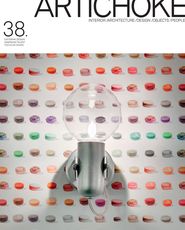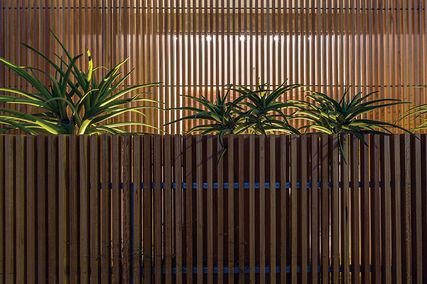Let’s face it: too much of the context of our lives (in Perth and elsewhere in Australia) is bland, non-specific and overly cautious. “Design Cannot Wait” – the provocation for the twentieth anniversary of the Design Institute of Australia (DIA) Western Australian Chapter’s Forum – produced speakers who demonstrated some design moves that are effectively shifting people’s mindscapes.
Museum of Old and New Art (MONA) in Hobart.
Image: Leigh Carmichael
Think of Gaudi. So few truly invest heavily in high-risk creativity that actually redefines and rethinks how we design the world we inhabit. Then there is the idea of more nuanced and pleasurable places derived from working differently with the energy created by building smaller, more immediate relationships, including connecting to the specifics of site and to the liberalization of “ideas.”
Emma Williamson is director of CODA, a Fremantle-based architectural practice with a reputation for rich, intelligent ideas that are subjected to a rigorous design process. As the first speaker, Williamson talked about building the practice with her husband, their team and the workspaces they created, describing a trajectory across vast urban design projects in Western Australia’s north-west, through to a stunning beach shack in Yanchep. The work is always inventive and responsive. CODA’s conversation is as much about people, commitment and community as it is about the evolution of spectacular design and the economics of building.
Photographer and graphic designer Leigh Carmichael’s tough gig was to follow Williamson. No-one was disappointed. Beyond the subject of his presentation – the clearly compelling Museum of Old and New Art (MONA) in Hobart and its series of appendages, including the Source Restaurant, Moorilla Winery and Moo Brew beer – what lingers is the way in which Carmichael held back on his audience, moved slowly, built tension and finally induced a kind of slippage that exposed and articulated what for many is a supressed and inarticulate sense of desire, pain, beauty, pleasure and horror within. This presentation was not about the work, it was the work. The act of presenting was more powerful than the subject of the presentation.
Warren Taylor’s presentation looked at a series of exhibitions of graphic design held at Melbourne’s The Narrows gallery and the very young John Cinquina told the inspirational story of his design branding agency, Red Meets Blue. The event ended warmly when New Zealand’s Garth Falconer, from Reset Urban Design, gently yet incisively touched his audience through his deep connection to site and the memory of his now-missing work in central Christchurch.
Together, these five distinctive speakers across disciplines implanted the idea that what is required for design to change the world is for designers to dig deeper, for enablers to take serious risks and for us to work together in smaller, connected teams.
Source

Discussion
Published online: 1 Mar 2012
Words:
Lynn Churchill
Images:
Leigh Carmichael
Issue
Artichoke, March 2012


















